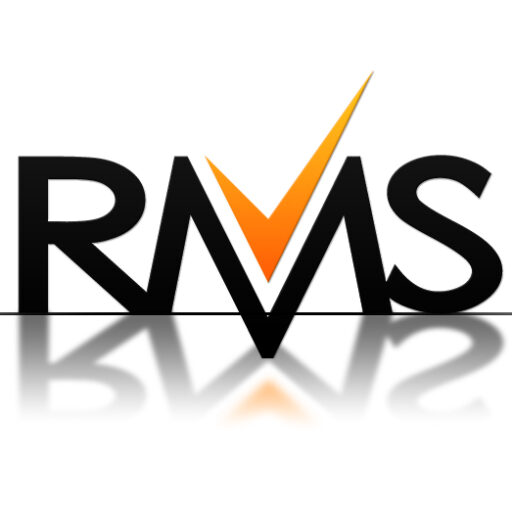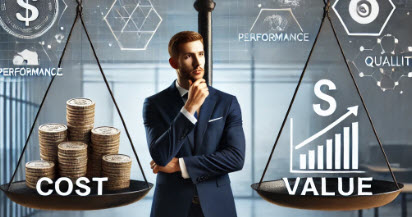Rewarding Exceptional Performance – The Challenges
Not every reward needs to be glamorous to be meaningful. Years ago, early in my career, I earned a set of garden tools through a performance incentive program. It wasn’t a bonus check or a flashy plaque—but to this day, I still remember that heavy-duty rake, shovel, and trowel with ergonomic grips and a matching carrying bag. Why? Because it felt personal. It was tied to real effort, it was something I genuinely liked, and it showed that someone thought about what would make the reward memorable.
That experience stuck with me far more than some of the so-called “prestige” rewards I received later on—including a corporate jet ride that ended up being a frustrating experience – requiring me to miss an important family event.
Incentives are tricky. When they work, they reinforce great performance and deepen engagement. When they miss, they can deflate or even demotivate.
The key isn’t always the size of the reward—it’s the fit.
And that starts with knowing the people you’re trying to recognize.
The Unintended Consequences of Incentives
Building a reward system that celebrates high performance without creating new problems is tricky. Collectors are savvy. Give them a goalpost, and they’ll find a creative way to reach it—sometimes too creative.
I remember one program that rewarded “promises kept.” So, when a collector delayed documenting a promise until the payment came in—was I really surprised? Another time, a collector bragged he could be gone for a full month and still meet his budget. That kind of manipulation shows how quickly a reward program can drift away from its original intent.
As an auditor, I worry about whether documentation is accurate. As a manager, I worry about wasting money on an incentive program that doesn’t hit the true compliance and performance goals—while still treating employees and consumers fairly.
What Makes a Reward Program Work?
Let me tell you more about the garden tools and the jet ride—and why they illustrate the best and worst forms of recognition.
The shovel, rake, and trowel and other associated tools came from a large catalog of items offered through a performance incentive program. I earned points for various activities and mini-successes, which I could redeem for rewards of my choice. I liked that I had options—I could go for smaller rewards more frequently or save up for a bigger item. (And let me tell you, that was one well-made garden tool set, complete with a matching carrying case!)
What made it memorable was that it was something that I genuinely wanted. I planned for it, worked toward it, and picked it myself. I was actually impressed that my company offered rewards with real personal value—something I would enjoy, rather than something easily forgotten.
The jet ride, on the other hand, was a very different experience. The company didn’t ask if I wanted to ride in their corporate Lear Jet—they simply assumed it would be a prestigious and exciting reward. After all, not everyone gets invited to ride in the company jet, right?
But instead of arranging it around my availability, they told me when and where I needed to be, with no flexibility. That date didn’t work for me, and I ended up missing an important family milestone to make it happen. Of course, I politely said thank you—but I felt more frustrated than recognized.
It was a classic example of a reward that looked good on paper but missed the mark because no one asked whether it mattered to me.
Here’s what I’ve seen work best:
- Tailored Rewards: Not everyone wants a cash bonus. Some value recognition, others want time off, flexibility, or even something quirky like chocolate or lotto tickets. The best programs offer a mix—and the very best programs ask collectors what motivates them. A simple conversation can go a long way: “What kind of recognition or reward feels meaningful to you?” You may be surprised by the answers. One-size-fits-all rarely works when it comes to showing appreciation. Connecting the reward to what the recipient actually values shows that you’re not just checking a box—you’re paying attention.
- Clear Alignment with Performance Goals: If you’re rewarding something, make sure it actually reflects the kind of performance you want more of. Don’t reward the wrong behavior just because it’s easy to measure.
- Built-In Compliance: Performance rewards in collections must always include a compliance lens. If not, you risk incentivizing bad behavior that could put the company at risk.
- Fairness and Transparency: Nothing kills a reward program faster than a sense of unfairness or confusion. Avoid “black box” decisions—where it’s unclear how winners are chosen, bonuses are calculated, or recognition is earned. If people don’t understand the process, they’re less likely to trust it—or be motivated by it. Even when only a few people receive rewards, everyone should understand the why. Transparency builds credibility and keeps your program from feeling arbitrary or political.
- Recognition Matters: Don’t underestimate the power of simple acknowledgment. A personal thank-you, peer recognition, or spotlighting a job well done can be more meaningful than cash. When public recognition aligns with individual values, it has a lasting impact.
Some Closing Thoughts
Rewards don’t have to be extravagant—but they should be thoughtful. When a reward feels earned, personal, and aligned with what someone actually values, it creates a lasting impact. That kind of recognition encourages not just performance—but pride, loyalty, and connection.
Think of the contrast: I still smile when I remember that shovel and rake because they were meaningful to me. I chose them, I worked toward them, and they felt like a true reward. The jet ride? Flashy, expensive, but disconnected—and ultimately, forgettable.
Whether it’s a tool set, a thank-you note, a bonus, or a shout-out in a team meeting, the best rewards say: “We see you. We appreciate you. And we want more of what you just did.”
It’s not about how much you spend. It’s about how well you connect.
Resource Management Services, Inc. provides consulting on collection and vendor management topics.
With expertise and experience in collections, oversight and compliance, we understand the challenges faced by creditors in managing collections and recoveries while adhering to ever-evolving regulatory standards.
That’s why our team of seasoned experts is dedicated to providing tailor solutions that address your unique collection and compliance requirements.
From comprehensive consulting services to specialized training programs and meticulous oversight of third-party vendors, we offer a comprehensive suite of services designed to empower your team and optimize your compliance strategies.
Contact our blog authors or Write to us at info@resourcemanagement.com for more information.
www.resourcemanagement.com

Author: Judy Hammond
judy.hammond@resourcemanagement.com
Judy Hammond is founder and President of Resource Management Services, Inc. The corporation was founded in 1986 and specializes in auditing and consulting, serving the collection and recovery industry. As President of Resource Management Services, Inc., she has more than 35 years of experience with an emphasis on operational reviews for compliance and operational effectiveness of collection operations, both for creditors’ internal collection and recovery operations as well as collection agencies and attorneys. She has worked with top banks and financial institutions, utilities, credit unions and telcoms, (and their vendors) and has conducted many Best Practices projects. She is author of various industry publications: “Comprehensive Agency/Attorney Usage Study,” “Comprehensive Agency/ Attorney Usage Study II” and “Collect More From Collection Agencies”. Her work with creditors who were looking to sell debt for the first time, and subsequent Buyer/Seller research was the foundation for the second corporation, The Debt Marketplace, Inc. She worked with Dennis Hammond as co-founders of the Debt Buyers’ Association, (now RMAi), building the foundations for industry standards, as well as the original code of ethics. She developed and produced two industry conferences, Collection and Recovery Solutions and Debt Connection Symposium & Expo, from their inception in 2002 and 2006, respectively, to 2022. Prior to starting her own company, she worked with two large collection agencies.

Sign Up for the Twice Monthly Newsletter
Just enter your email address at the top orange bar at:
Collection Compliance Experts – “The Power of Expertise: Oversight Perfected”
It’s that easy! Twice a month – we provide blog updates and Resources for the Collection and Industry Professional.
Your email is just for this newsletter. We never sell your information. No fee. Opt-out at any time.




